1. Panjandrum – the ultimate invasion weapon
This ungainly device was intended to be used against the beach defences of Hitler’s Atlantic Wall. It consisted of two rocket-propelled wheels, ten feet in diameter, joined by a cylinder filled with explosives. The Panjandrum was designed by the British Admiralty’s Directorate of Miscellaneous Weapons Development, and named after a piece of 18th Century nonsense prose. It would be launched from a landing craft, accelerate up the beach and blow a hole in the sea wall or any other concrete obstacles in its path. Tests in 1943 and 1944 were a disaster. The rockets attached to the wheels often failed or detached themselves, and the Panjandrum went everywhere except in a straight line. It was never used in action.
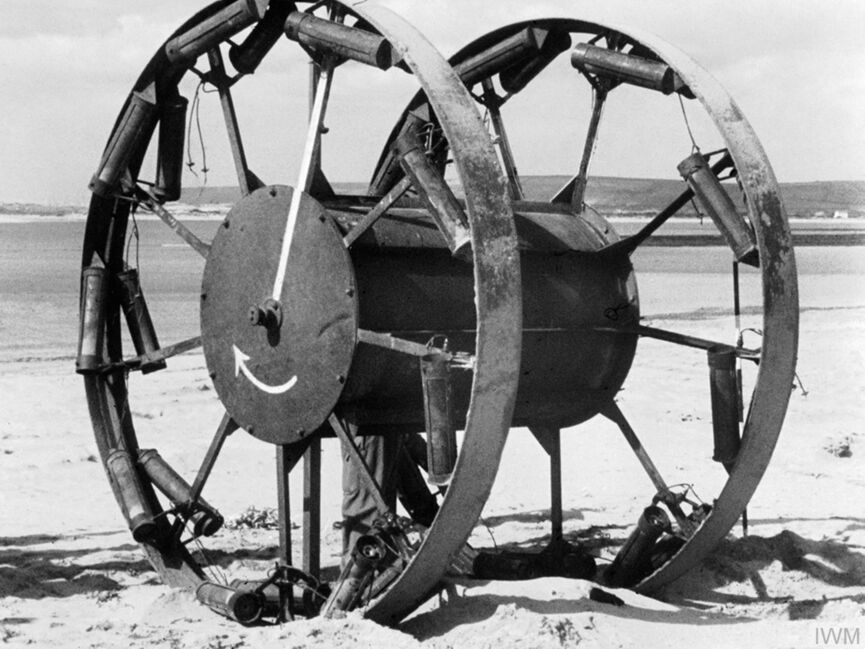
2. Krummlauf – the gun that fired round corners
The Krummlauf was a curved barrel attachment for the German Sturmgewehr 44 (StG 44) assault rifle, which enabled the weapon to be fired around corners. Its shape meant it could also be used from within a tank to counter enemy infantry armed with mines or other anti-tank weapons. In use, it was found that the barrel attachment became distorted and quickly wore out from the pressure of the rounds being fired. Also, the bullets often shattered on exiting the krummlauf. Although a failure at the time, the concept has been revived with some modern weapons, allowing the user to engage the enemy without exposing themselves.
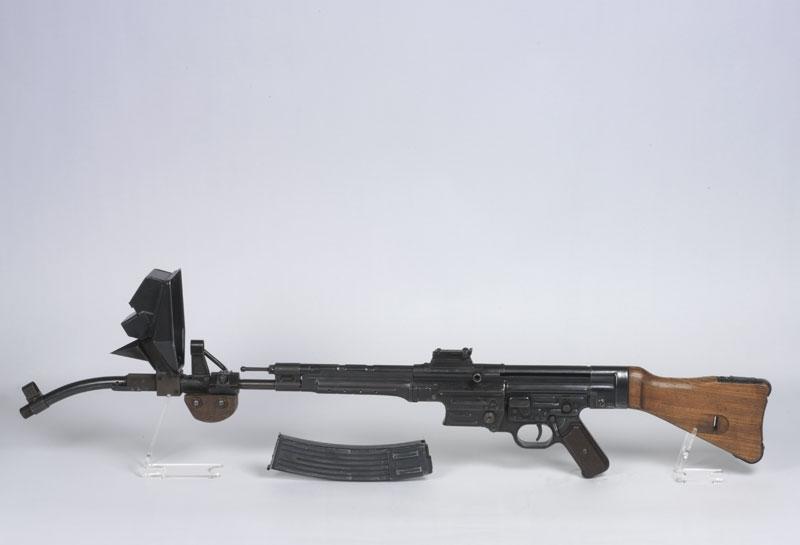
3. Maus – Hitler’s giant tank
The Panzerkampfwagen ‘Maus’ (Mouse), designed by Ferdinand Porsche, was the ultimate expression of Hitler’s desire to produce an indestructible super-heavy tank. It was first proposed in 1942, but few in the German High Command saw the need for this 200 ton monster. Trials began in 1943, but there were constant mechanical problems associated with the drivetrain. The tracks were driven by electric motors powered by a huge Daimler-Benz aircraft engine, but top speed was barely 12mph. The Maus had armour up to 240mm thick and a 12.8cm gun. Although there were plans to build 150 tanks, only two prototypes – two hulls and one turret – were ever completed.
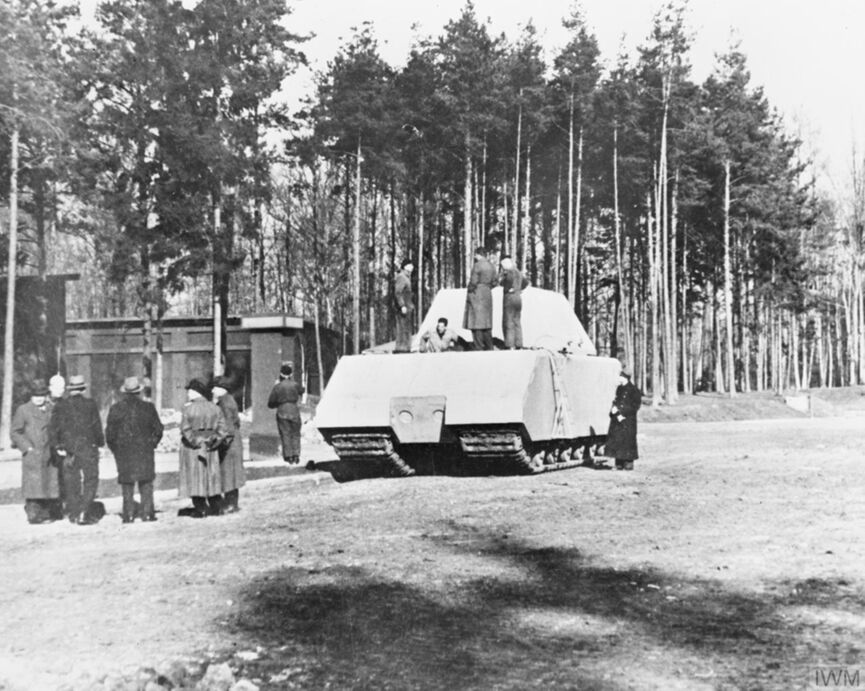
4. Covenanter – Britain’s worst tank
At the outbreak of the Second World War the British army had three types of tank: light tanks for reconnaissance, heavily armoured ‘infantry tanks’ to support frontal attacks, and fast ‘cruiser tanks’ to exploit the gaps made in the enemy defences. One of the latter was the A13 Mk III (Cruiser Tank Mk V) Covenanter. It was designed in 1939, and looked good on the drawing board with its large wheels, low profile and rakishly sloped armour. Large numbers were ordered as Britain frantically re-armed. But its 2-pdr gun and 30mm armour were already outclassed when it was delivered in 1941, and worse defects lurked under the bonnet. The Covenanter suffered from major engine cooling problems which were never overcome. It was so unreliable that it never went to war, and the 1,771 tanks produced were used only for training.
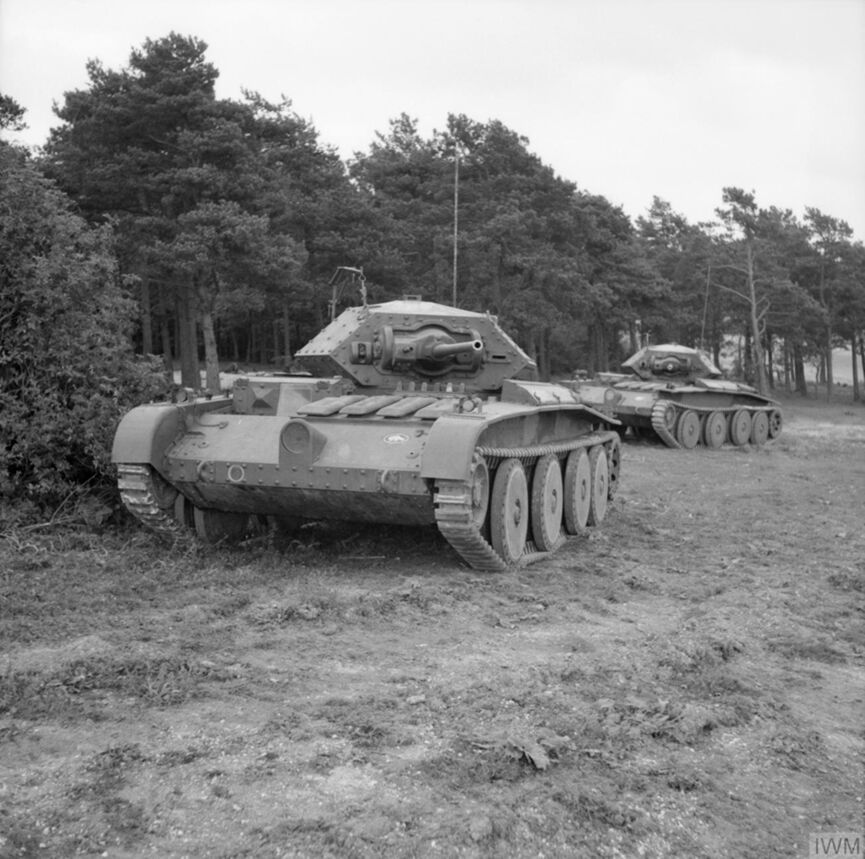
5. TOG – a First World War tank revived
In 1939 the Ministry of Supply set up a committee of the principal tank designers from the First World War, with the object of looking into current British tank development. ‘The Old Gang’, as they were known, came up with their own concept for a heavy tank – known as TOG 1. It was a long, heavily armoured machine, able to cross trenches and terrain cratered by shells. Its armament was mounted in sponsons on either side of the hull. It was in effect a machine designed to re-fight the First World War, and showed just how remote the committee was from modern developments. Its transmission and steering system were also needlessly complex. A second prototype, TOG 2, featured a revolving turret and other improvements, but the tank was still too cumbersome and too complicated to be adopted by the War Office.
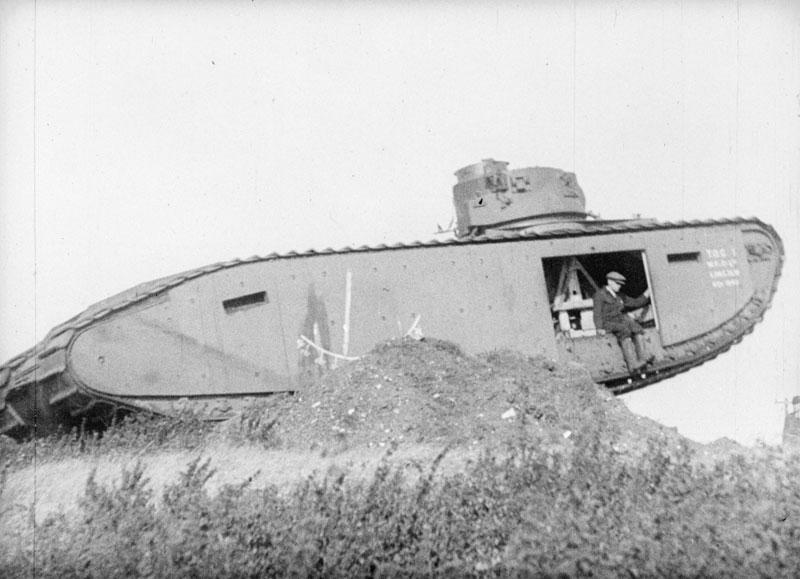
6. Maginot Line – failed French defences
The Maginot line was the French response to German rearmament in violation of the Treaty of Versailles. Built between 1929 and 1939, and named after a French defence minister, the line was a complex network of fortresses, bunkers, obstacles and artillery positions along France’s border with Switzerland, Germany and Luxembourg. The line was only partially extended north of this because it was assumed that any future German invasion attempt would be met and defeated in Belgium, hopefully with British assistance. The Maginot Line was seen as a sensible way to maximise the military potential of a limited number of troops, but it also reflected France’s static, defensive mentality which was exploited by Nazi Germany in May 1940. As expected, Hitler’s forces invaded neutral Belgium, but the focus of the attack was through the undefended Ardennes forest. The Maginot Line was quickly outflanked, and French forces caught off balance by the speed of the German advance. Within six weeks France had surrendered.
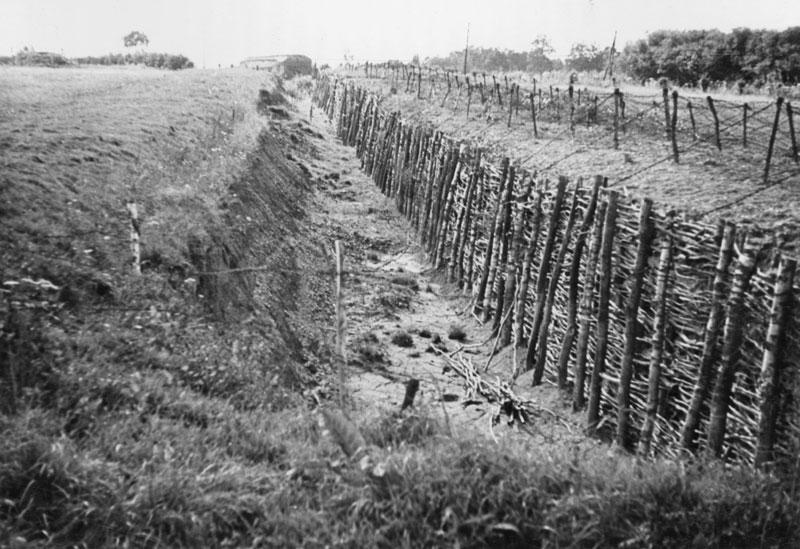
7. Smith Gun – firepower for the Home Guard
During the Second World War Britain’s Home Guard was famous for making do with outdated weapons as industry concentrated on supplying the regular army with modern equipment. In particular there were very few anti-tank guns, a shortage which retired British Army Major William H Smith intended to put right. His unusual design for a 3-inch smooth-bore gun was put into production in 1941, but only after many safety improvements had been imposed. The Smith Gun had to be tipped onto its side to fire – one of its wheels acting as a baseplate. It had a low muzzle velocity and was only accurate to about 200 yards, assuming ammunition was available to fire – which was rarely. 4,000 guns were made, but they only really had value as propaganda.
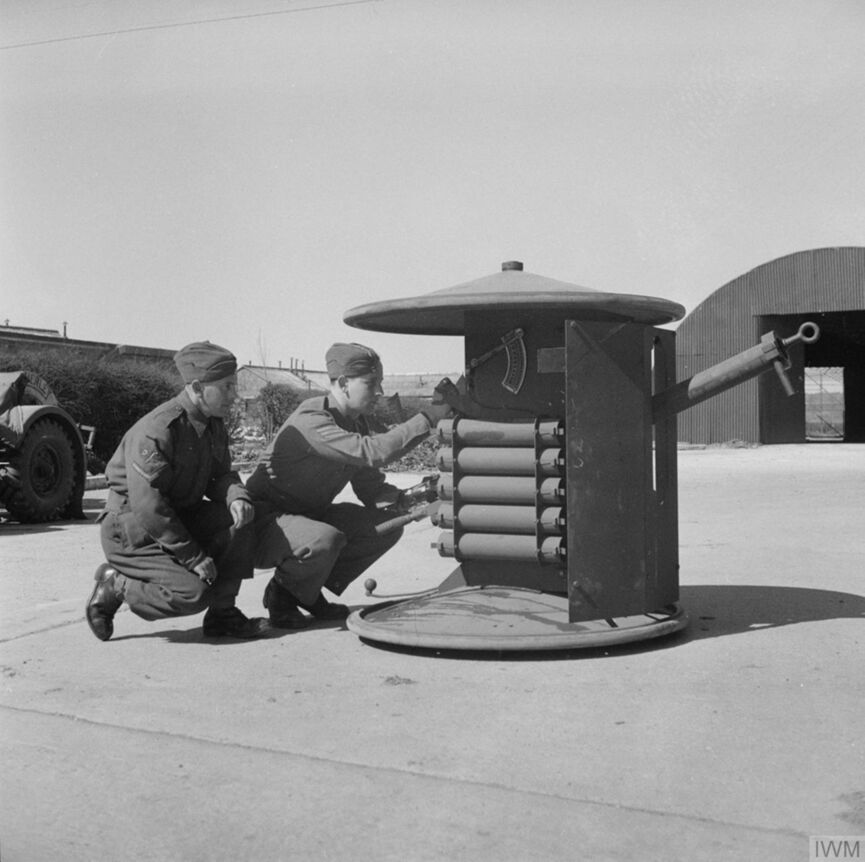
8. ‘White Rabbit’/’Nellie’ – the trench digging machine
‘White Rabbit’ or ‘Nellie’ were two of the nicknames given to a trench digging machine built by the Royal Navy and known officially as Cultivator No. 6. It was based on an idea first proposed by Winston Churchill during the First World War, which he revived in 1939, as First Lord Of the Admiralty. ‘Nellie’ was intended to burrow towards the enemy line, excavating a trench wide enough for troops to advance behind. The huge 130 ton machine combined a plough and cylindrical cutter but carried no weapons. The device may have had some merit on the Western Front during the First World War, but was utterly unnecessary on the Second World War battlefield and the idea was eventually dropped after a handful of machines had been constructed.
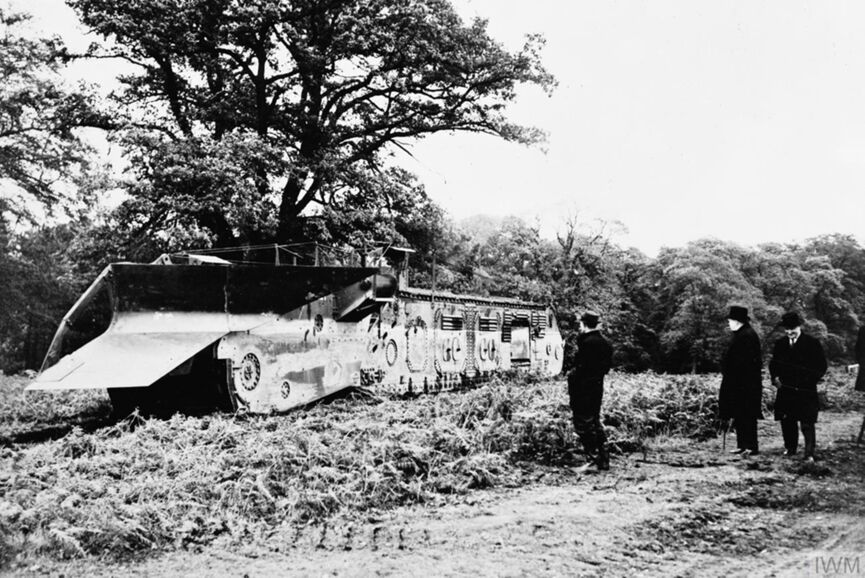
9. V-3 – Hitler’s ‘Supergun’
The Vergeltungswaffe (Retaliation Weapon) 3 was a German supergun designed to bombard London from an underground complex 100 miles away at Mimoyecques, near Calais in northern France. The V-3 was constructed on a multi-chamber principle whereby secondary charges firing in sequence along the main barrel accelerated a shell to the velocity required to reach its target. A battery of 25 gun tubes were sunk into inclined tunnels in the ground, further protected by a vast concrete slab. It was planned to bombard London at a rate of 600 shells an hour. The Allies assumed the site was part of the V-2 rocket programme and launched bombing attacks in late 1943. Despite intense work by the Germans to finish the project, it was finally put out of action by a raid on 6 July 1944 before a single shell had been fired.
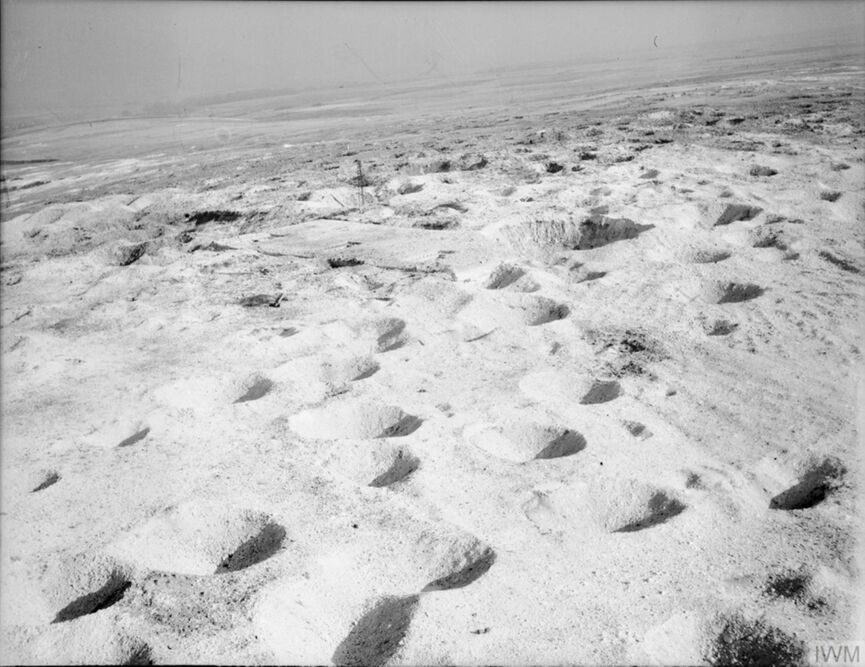
10. Goliath – the robot demolition vehicle
Goliath, or the Leichte Ladungsträger, was a German expendable miniature tracked vehicle designed to deliver an explosive device by remote control. There were two types: battery-powered, with a 60kg charge, or a larger petrol engine version that could carry a 100kg device up to 650m from the controller. Goliath was to be used against buildings, bunkers or even enemy troops and vehicles if the opportunity arose. Some were used to clear minefields. Unfortunately for the Germans, the trailing control wires were vulnerable to being cut, and the vehicle itself was slow and had poor ground clearance. 2,650 were built between April 1942 and September 1944, but were rarely effective. The Germans also experimented with larger, radio-controlled vehicles that could drop a charge close to their intended target and then retire to a safe distance, but these too were a waste of resources.
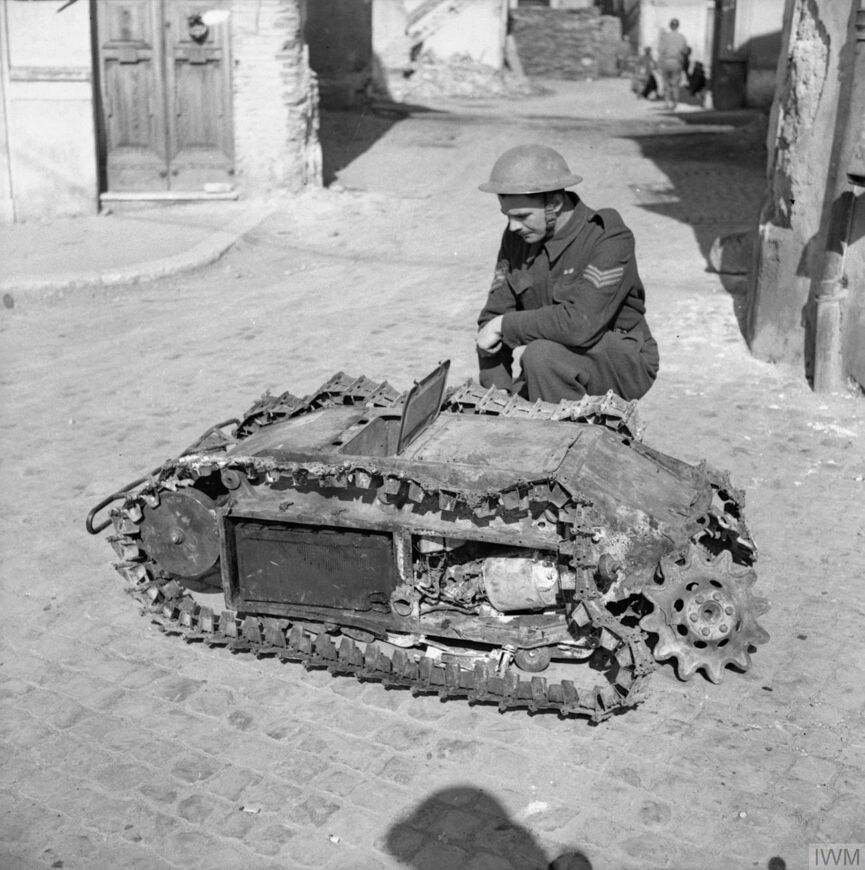
11. Luftwaffe Heavy Bombers – a project abandoned
In 1936 the Chief of Staff of the new Luftwaffe, General Walther Wever, was killed in an air crash. He had been Germany’s principal advocate of strategic bombing – defeating an enemy country through the systematic attack on its economy and population. It was an idea which had gained ground in Britain, where new heavy bombers were being designed for RAF Bomber Command. In Germany however, Wever’s death – and a lack of resources – saw the abandonment of existing projects for a long-range bomber. Instead, priority was given to smaller aircraft, especially dive-bombers. The Luftwaffe’s prime function would be to support the army over the battlefield. Germany’s lack of a strategic bomber force to hit back at British and Soviet industry was keenly felt as the war progressed. Belated attempts to get a range of new four-engined aircraft into service failed, and only one – the Heinkel He 177 – saw action. There were even designs for an Amerika bomber that could reach New York, but that objective was also never realised.
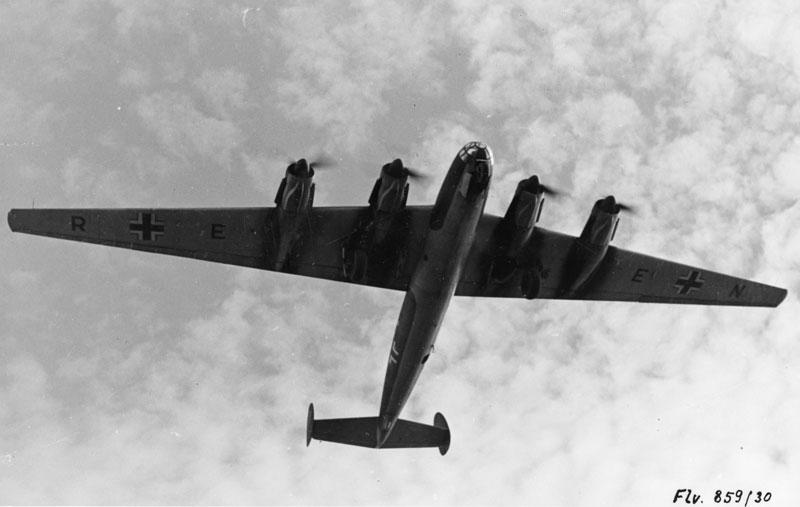
12. Me 163 Komet – a firework fighter
The tiny Messerschmitt Me 163 Komet was the world’s only rocket-powered fighter. It was designed to intercept high-flying American bombers over Germany. It used a liquid propellant consisting of two volatile substances which ignited when mixed together. Enough thrust was produced to propel the tiny fighter to an altitude of 39,000 feet in 3.45 minutes, with a top speed of over 550mph. Operations began in May 1944 but the Komet was almost too fast and pilots struggled to engage the slow-moving bombers. Also, the rocket engine only had a ‘burn’ of 7 minutes, after which the pilot had to glide back to base. Accidents were common, and even small quantities of the highly unstable fuel could cause explosions if carelessly handled. 364 Komets were built but they shot down only 16 bombers for a loss of at least 13 of their own, which was a poor showing for such a major technological effort.
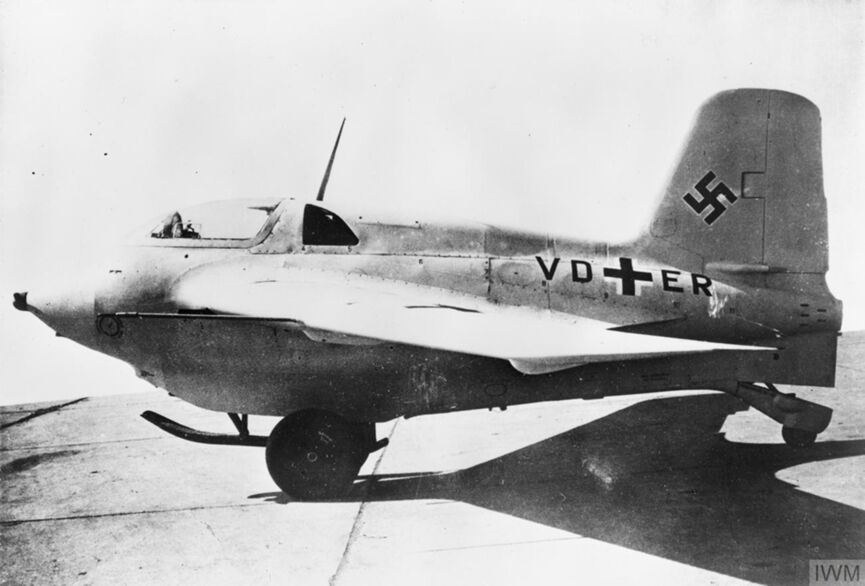
13. Schwerer Gustav – the German railway gun
A giant railway-mounted gun had been used by the Germans to bombard Paris, during The First World War. The concept of such a colossal weapon was revived in 1936, when Adolf Hitler asked the head of Krupp armaments what type of gun could destroy the fortifications of the Maginot Line. The gun was designated Schwerer Gustav. The 80cm gun, weighed 1,350 tonnes and could project a 7-tonne shell 29 miles. It was completed too late for the German Army’s attack on France, in May 1940. The artillery unit-to which it was allocated in January 1942, named the gun Dora. It fired 47 rounds, against the city of Sevastopol, in the Soviet Union-wearing out the barrel in the process. The second gun produced by Krupp, Schwerer Gustav 2, was never used in action. Schwerer Gustav 2 was placed in storage in March 1943, at Rügenwalde – an artillery firing range. The increased efficacy of aerial bombardment, in the Second World War, made these large guns obsolete.
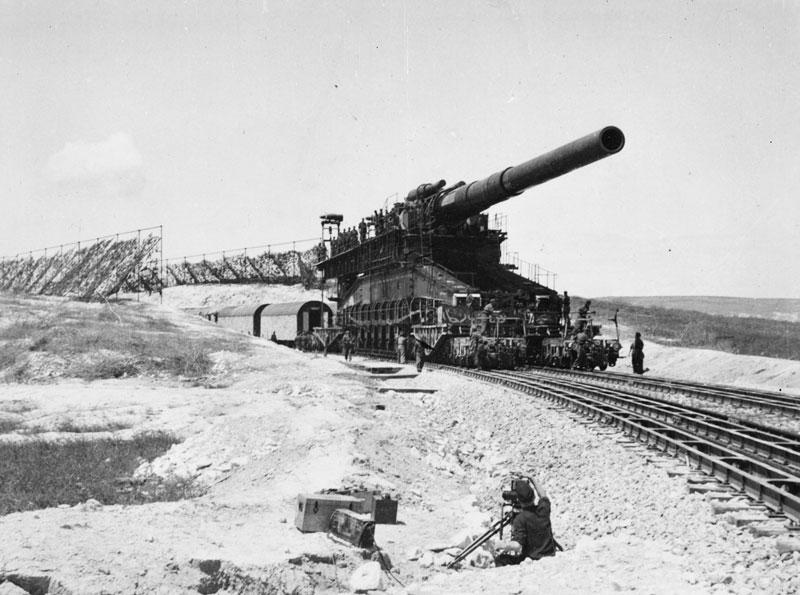
14. V-2 – Hitler’s revenge weapon
The V-2 rocket was Germany’s most advanced weapon of the Second World War, and also the most wastefully expensive. It was the second of Hitler’s ‘revenge weapons’, a large ballistic missile carrying a one ton warhead, which reached the edge of space before descending at supersonic speed to its target. German rocket development began before the war, but the V-2 was not ready until the autumn of 1944. It was used mainly against London and Antwerp, and there was no defence against it. However, although technically brilliant, and of undoubted propaganda value to an embattled Nazi hierarchy, the weapon inflicted comparatively little damage in return for the vast sums spent on it. The total quantity of explosives delivered by the 3,000 or so V-2s fired was far less than could be dropped in a single raid by RAF Bomber Command. 9,000 people were killed in V-2 attacks. Tragically a far greater number of slave workers died building these weapons.
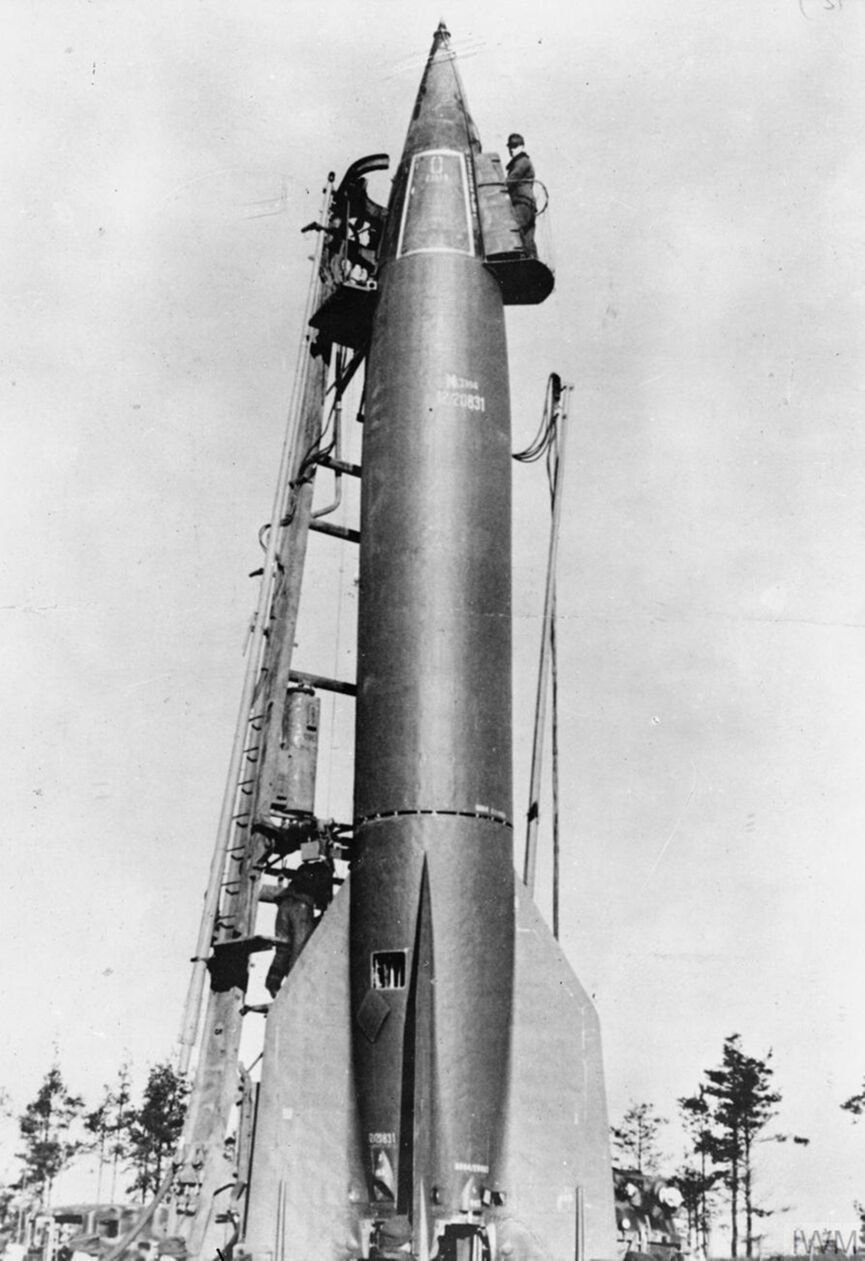
15. Boulton Paul Defiant – Britain’s flawed fighter
The unusual two-seat Boulton Paul Defiant entered RAF service in December 1939. Its only armament of four .303-inch machine guns was concentrated in a power-operated turret situated behind the pilot. The turret fighter concept was originally designed to combat mass formations of unescorted bombers, with pilots positioning their aircraft alongside or below, so that the gunners could pour fire into their targets. Unfortunately, the aircraft’s extra weight and lack of forward-firing weapons made it vulnerable to conventional enemy fighters. The two Defiant squadrons committed to the Battle of Britain suffered heavy losses and had to be withdrawn. The aircraft had some success later as a night fighter during the Blitz, but was then retired to training duties.
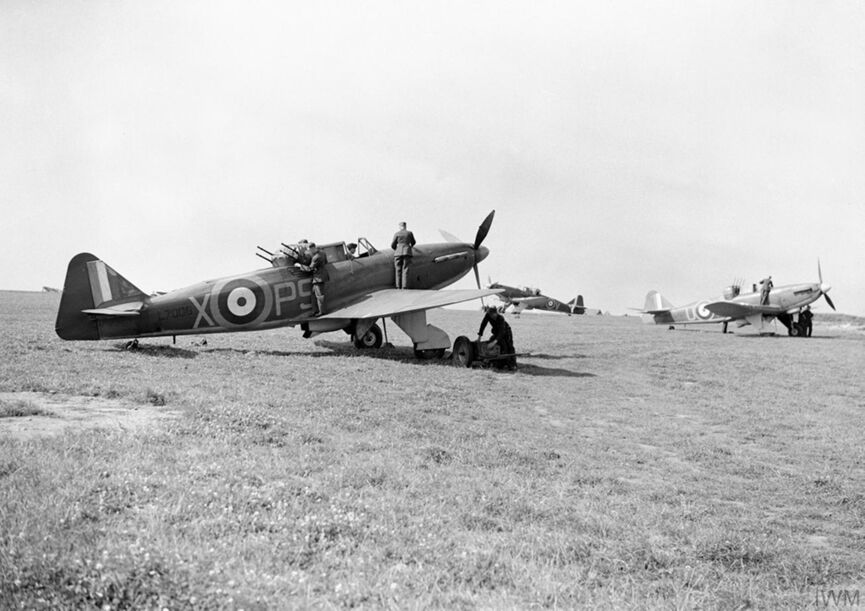
16. Wind Cannon – an experiment in air power
The Windkanone (Wind Cannon) was a bizarre German anti-aircraft weapon. It comprised a large barrel, bent upwards at one end, through which an explosive jet of compressed air was ejected upwards by the ignition of a mixture of hydrogen and oxygen. The aim was to knock down low-flying aircraft. Trials showed that a powerful ‘slug’ of high-velocity air could inflict damage on ground structures, but it was unclear if it would have the desired effect against a small, fast-moving aircraft. In 1945 a wind cannon was installed on a bridge over the River Elbe, but it failed to achieve any results.
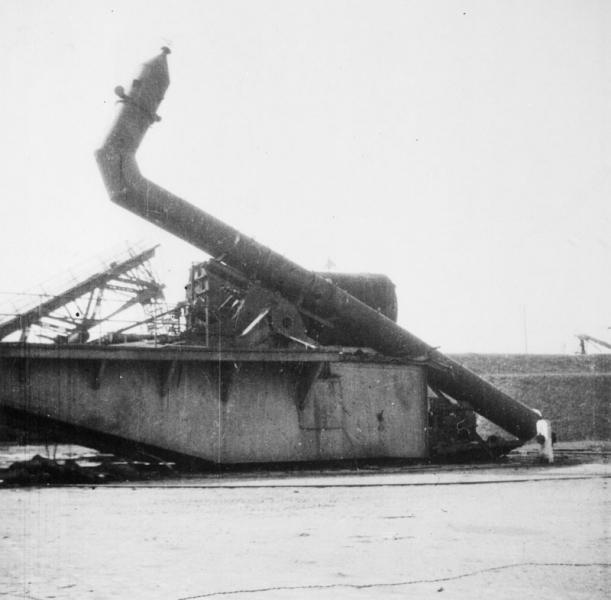
17. Kamikaze – Japanese suicide weapons
The Japanese military regarded death in battle as the ultimate way to serve their Emperor. When the war started to turn against Japan, the use of suicide weapons became a natural extension of this ethos – and a symbol of their desperation. The most famous example were the Kamikaze – pilots who deliberately crashed their aircraft into American ships. The Ohka was a manned rocket-powered flying bomb which was carried beneath an aircraft and then released near its target. There were also Shinyo suicide motorboats and Kaiten manned torpedoes. Not all Kamikaze weapons were small. The giant battleship Yamato was sent on a one-way mission during the battle of the Philippines in 1944. It was sunk by US aircraft. Japanese suicide attacks caused heavy casualties on occasions but had no hope of stemming the huge American onslaught. Even some Japanese commanders opposed the tactics as wasteful and futile.
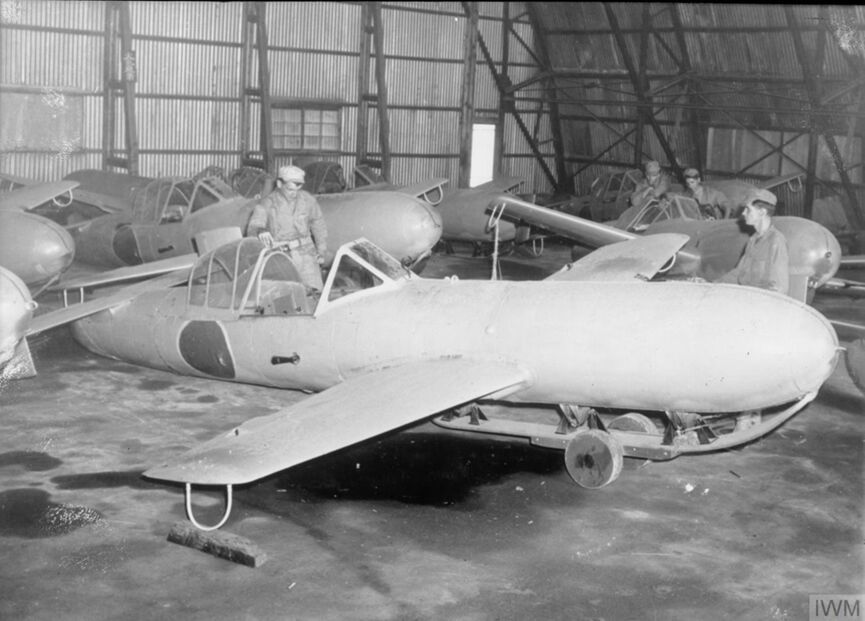
18. War Dogs – an unconventional Soviet weapon
Dogs played an important role in the Second World War, mainly undertaking security and search duties. In the Soviet Union they were also used for mine detection, message and supply carrying and as weapons of war. The most extreme example were the dogs trained to destroy enemy tanks using explosives strapped to their backs. The animals were trained to run under the vehicles carrying mines which exploded when a protruding lever touched the hull and detonated the charge. Soviet anti-tank dogs were used in 1941 and 1942 but results were poor. The animals often got confused in the heat of battle and some blew up their own handlers. The Germans quickly learned to shoot all dogs on sight. The Soviets soon abandoned this unconventional form of warfare.
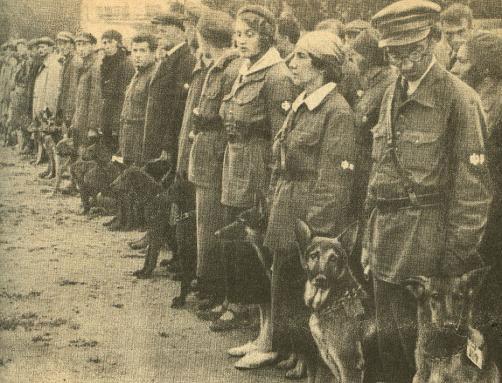
19. Japanese war balloons – a desperate attempt to beat the US
The United States enjoyed a position of virtual invulnerability to air attack during the Second World War. No conventional aircraft could reach it from an Axis country. However, from November 1944 to April 1945 the Japanese attempted a bombing campaign using unmanned balloons with incendiary or high explosive devices attached. These were carried from Japan on the jet stream – a westerly current of air at high altitude – and the bombs released automatically, hopefully to fall to earth over US or Canadian territory. Some 9,000 bombs were launched but few made landfall, and only 300 or so were recorded by the authorities. Damage was negligible. The greatest threat from the balloons was starting wildfires. The only casualties were a woman and six children who died in May 1945 when they discovered a balloon device in Oregon.











